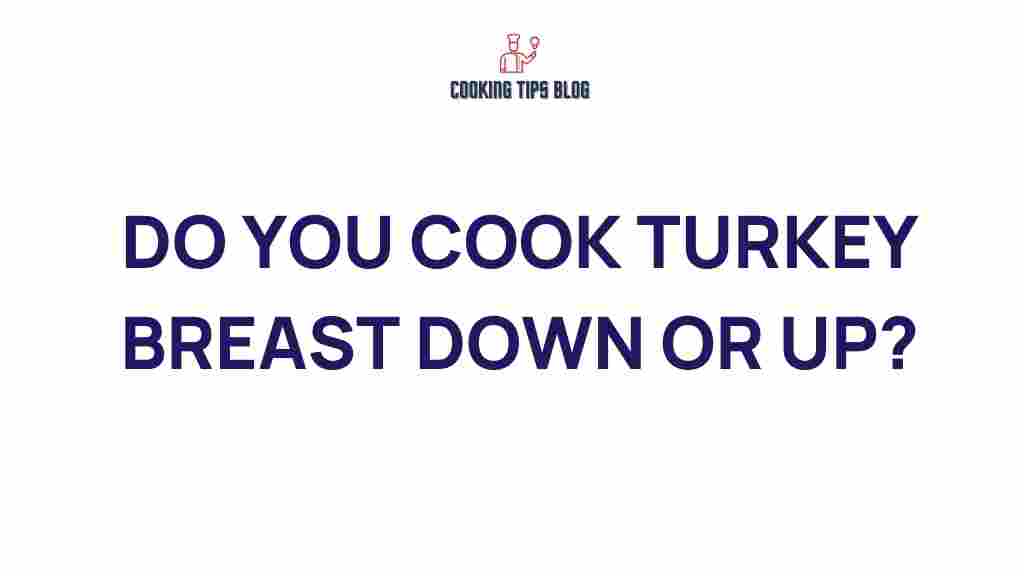The Great Turkey Debate: Should You Cook Breast Down or Up?
As the holiday season approaches, many home cooks begin to ponder the best methods for preparing the perfect turkey. One of the most debated topics in the realm of turkey cooking is whether to cook the bird breast down or breast up. Each method has its proponents, and the choice can significantly impact the juiciness and presentation of your turkey. In this article, we’ll explore the advantages and disadvantages of each cooking position, provide a step-by-step guide, and offer troubleshooting tips to ensure your turkey turns out perfectly every time.
Understanding Turkey Cooking Methods
When it comes to turkey cooking, the position in which you place your turkey can alter its texture and flavor. Here’s a breakdown of the two primary methods:
- Breast Up: This is the traditional method, where the turkey is placed breast side up in the roasting pan.
- Breast Down: In this method, the turkey is flipped over, cooking with the breast side down for a portion of the cooking time.
Now, let’s dive into the pros and cons of each method.
Pros and Cons of Cooking Turkey Breast Up
Cooking turkey breast up is the most common method and offers several benefits:
- Visual Appeal: A beautifully browned turkey breast is visually appealing and perfect for presentation.
- Ease of Basting: It’s easier to baste the turkey when it’s breast up, allowing for a more even distribution of juices.
- Traditional Method: Many people are accustomed to this style, making it a comfortable choice for holiday cooks.
However, there are some drawbacks:
- Dry Breast Meat: The breast may dry out more quickly as it cooks faster than dark meat.
- Less Juicy Flavors: Juices from the dark meat may not flow into the breast as effectively.
Pros and Cons of Cooking Turkey Breast Down
Now, let’s consider the breast down method, which has gained popularity among some cooks:
- Moisture Retention: Cooking breast down allows the juices to flow into the breast meat, keeping it moist and flavorful.
- Even Cooking: This method can lead to more evenly cooked meat, as the heat circulates better around the turkey.
- Less Basting Needed: The juices from the turkey itself often keep the breast moist, reducing the need for frequent basting.
On the flip side, there are challenges:
- Presentation Issues: The breast side may not brown as nicely, which can detract from the presentation.
- Difficulty in Basting: Basting can be awkward and less effective when the turkey is breast down.
- Risk of Spillage: When flipping the turkey, there is a risk of spillage or burns from hot juices.
Step-by-Step Guide to Cooking Turkey
Regardless of which method you choose, here’s a general step-by-step guide to cooking turkey:
1. Preparing the Turkey
Start by thawing your turkey if it’s frozen. This can take several days in the refrigerator. Once thawed:
- Remove the giblets and neck from the cavity.
- Rinse the turkey under cold water and pat it dry with paper towels.
- Season the turkey as desired, using salt, pepper, and herbs.
2. Choose Your Cooking Position
Decide whether you’ll cook the turkey breast up or breast down. Each method has its unique advantages, so consider your priorities—whether it’s moisture retention or presentation.
3. Preheat the Oven
Set your oven to 325°F (165°C). This temperature is ideal for slow roasting, allowing the turkey to cook evenly.
4. Roast the Turkey
If cooking breast up:
- Place the turkey in a roasting pan, making sure it is on a rack.
- Baste every 30-45 minutes with the juices from the bottom of the pan.
If cooking breast down:
- Place the turkey breast side down in the roasting pan.
- Halfway through the cooking time, carefully flip the turkey to brown the breast side.
5. Check Internal Temperature
Using a meat thermometer, check the internal temperature in the thickest part of the thigh. It should reach 165°F (75°C) for safe consumption.
6. Let It Rest
Once cooked, let the turkey rest for at least 20-30 minutes before carving. This allows the juices to redistribute, resulting in a juicier turkey.
Troubleshooting Common Turkey Cooking Issues
Even with meticulous preparation, issues can arise during turkey cooking. Here are common problems and their solutions:
- Dry Turkey: If your turkey is dry, it may have been overcooked. Use a meat thermometer next time to ensure you don’t exceed the safe cooking temperature.
- Uneven Cooking: If your turkey isn’t cooking evenly, consider using a convection oven or rotating the pan during cooking.
- Stuck Skin: If the skin sticks to the pan, ensure you’re using a non-stick roasting pan or properly greasing the surface.
For further tips on turkey cooking, check out this comprehensive guide.
Conclusion
The great turkey debate—whether to cook breast down or breast up—ultimately comes down to personal preference and cooking style. Each method has its benefits and challenges, but both can yield a delicious and festive centerpiece for your holiday table. By following the step-by-step guide and troubleshooting tips provided, you can confidently prepare a turkey that will impress your family and friends.
Whichever method you choose, enjoy the process of turkey cooking and the joy it brings to your holiday celebrations. Happy cooking!
For more delicious recipes and cooking tips, visit our recipe archive.
This article is in the category Recipes and created by Cookingtipsblog Team
